
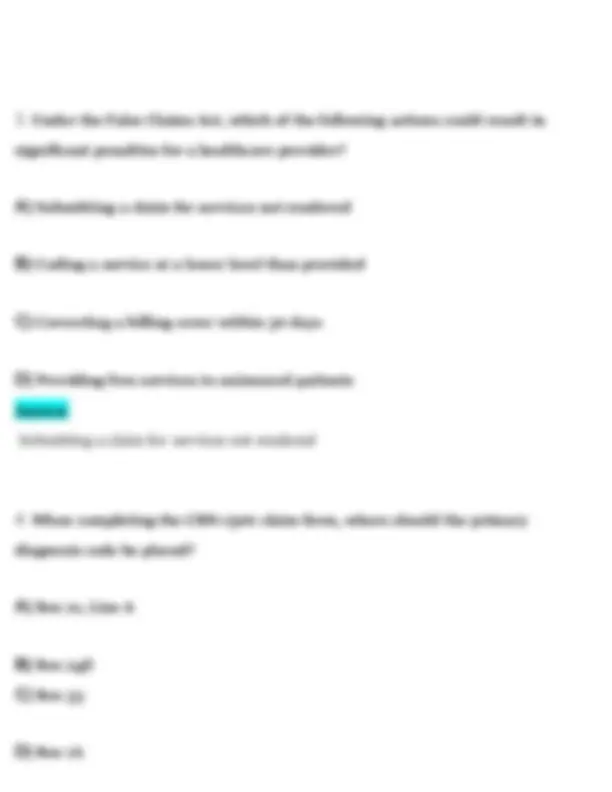
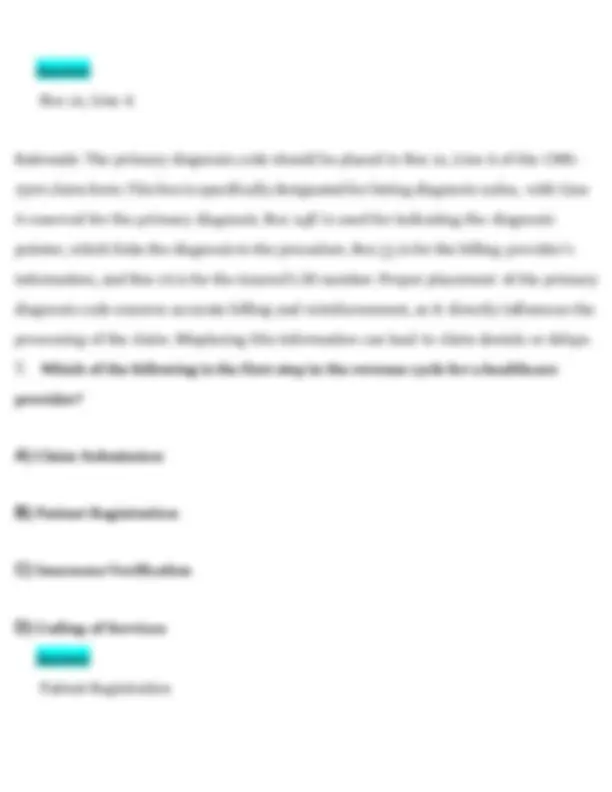
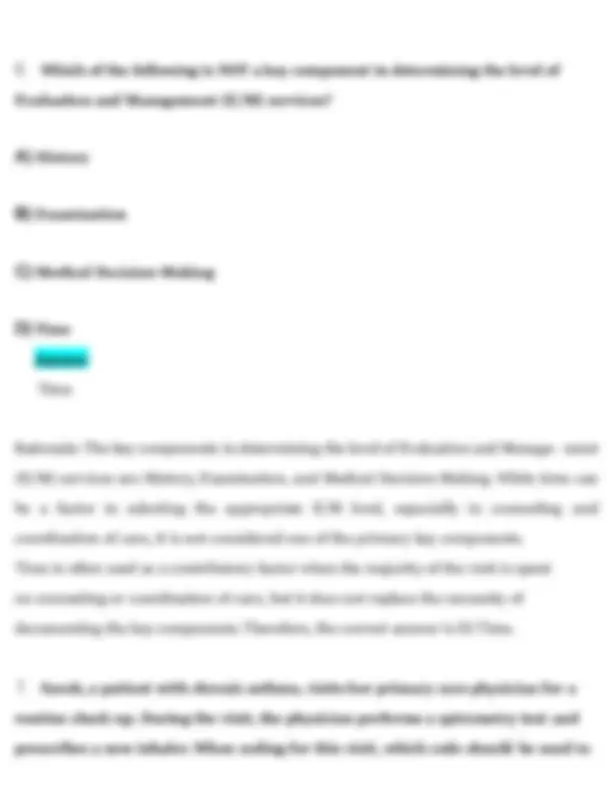
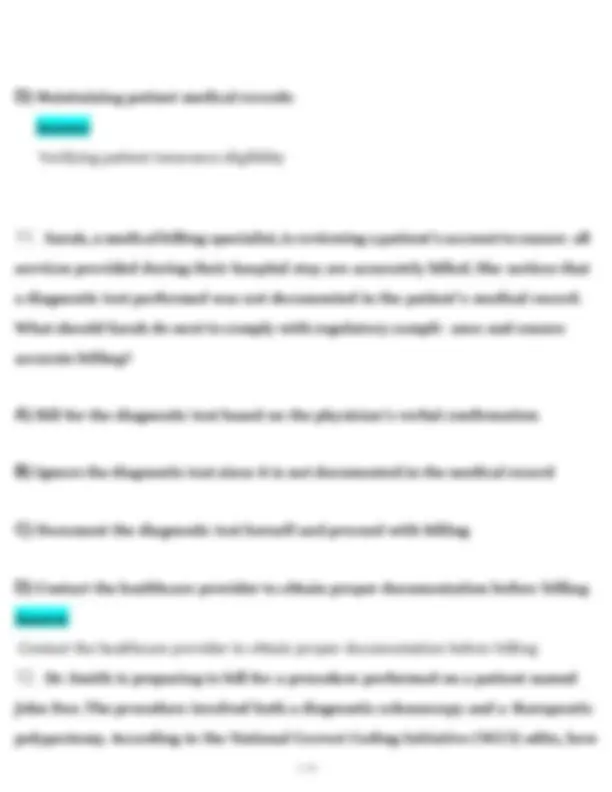

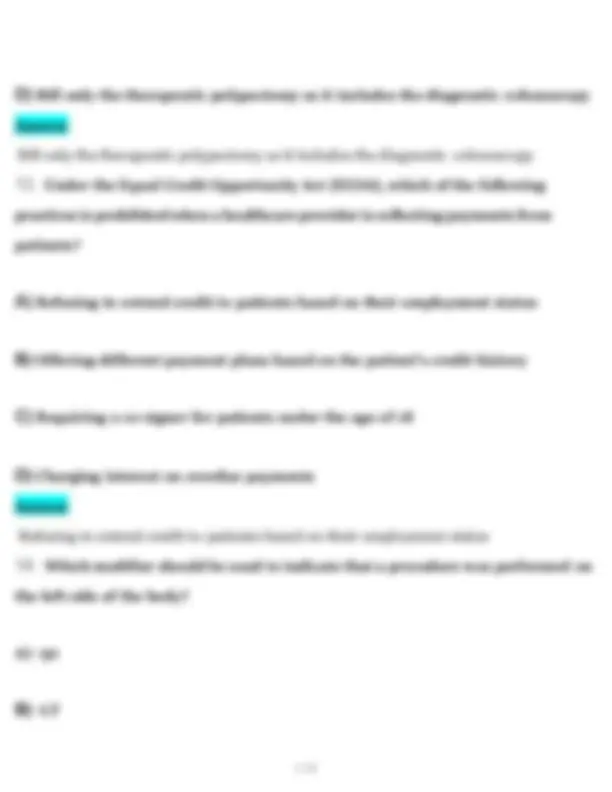

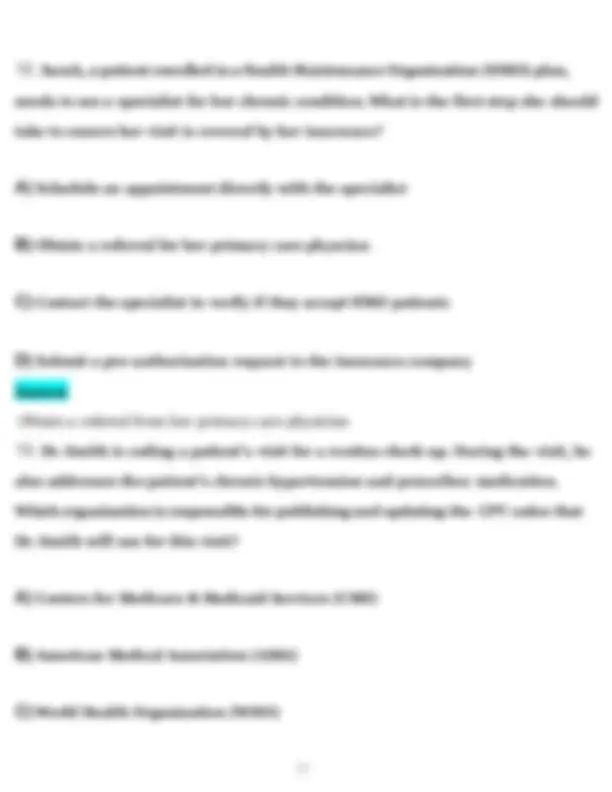
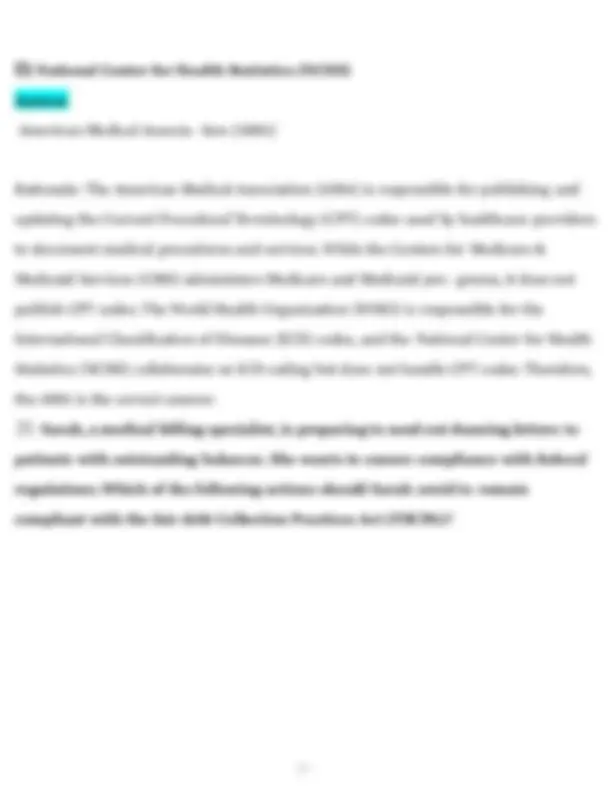
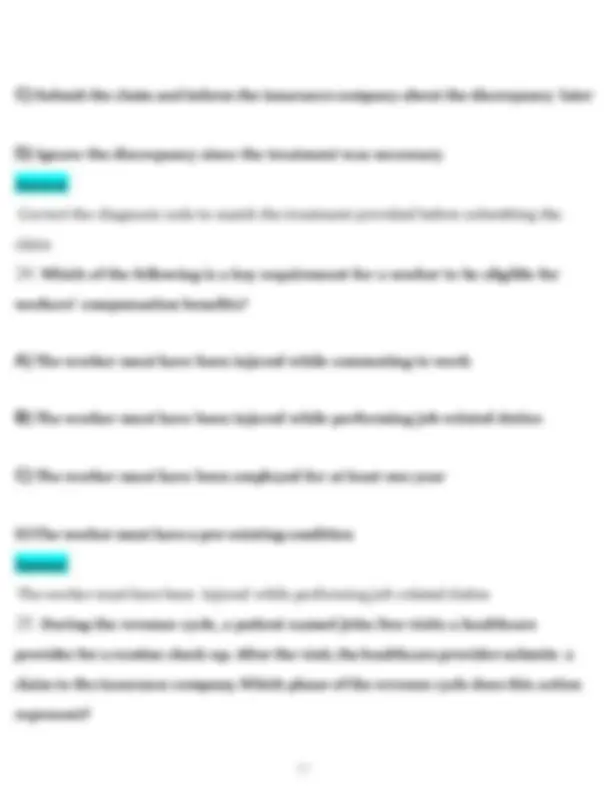
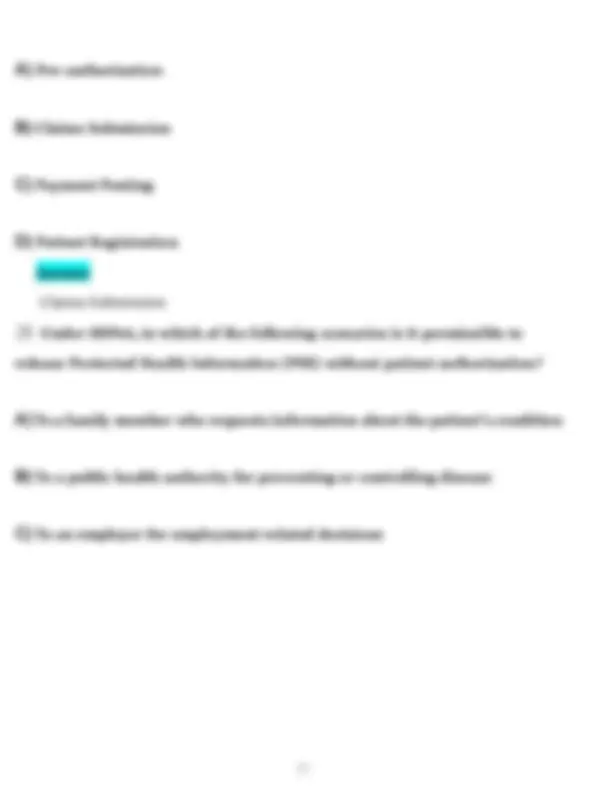
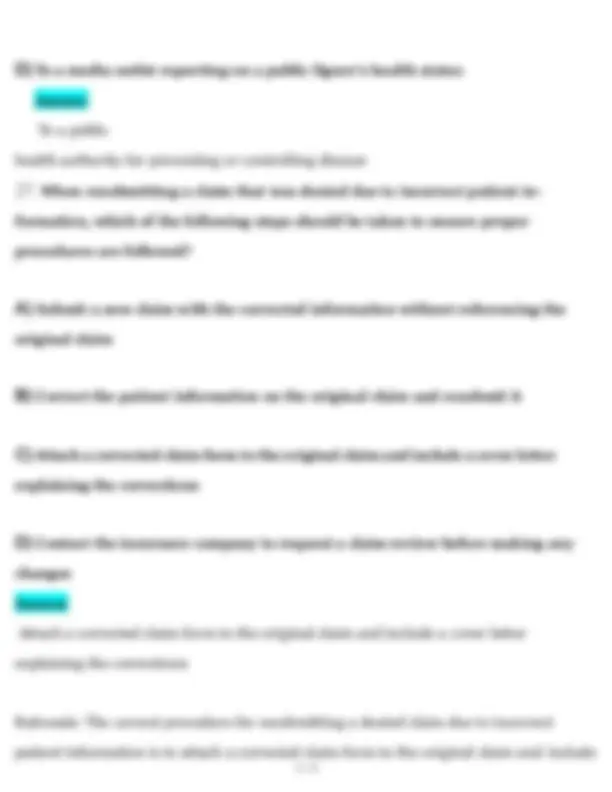
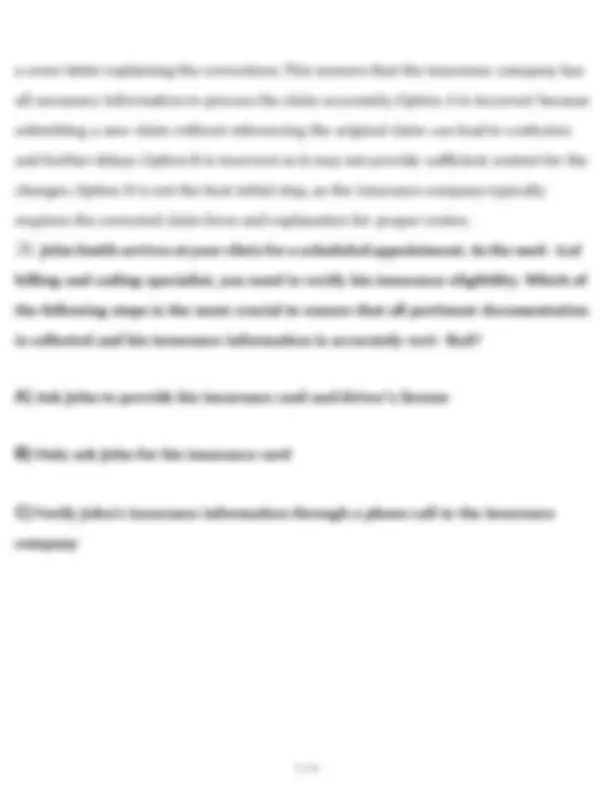
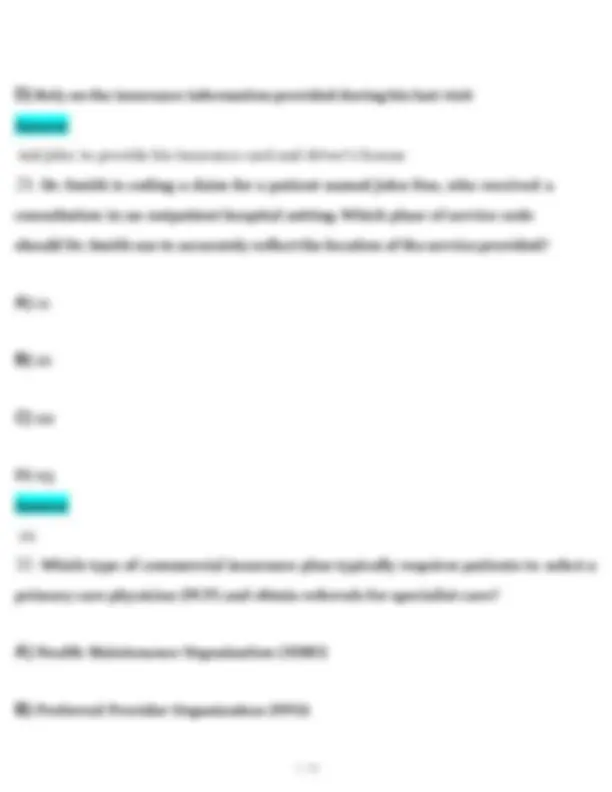
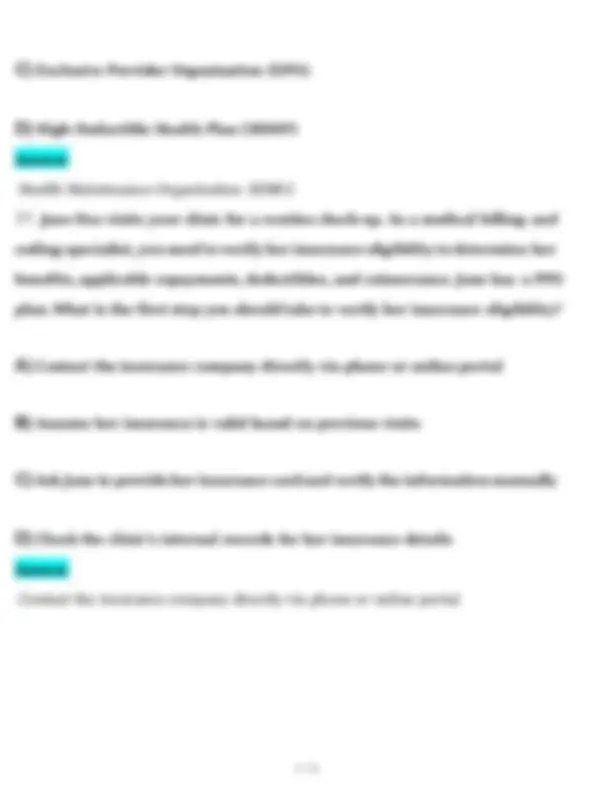
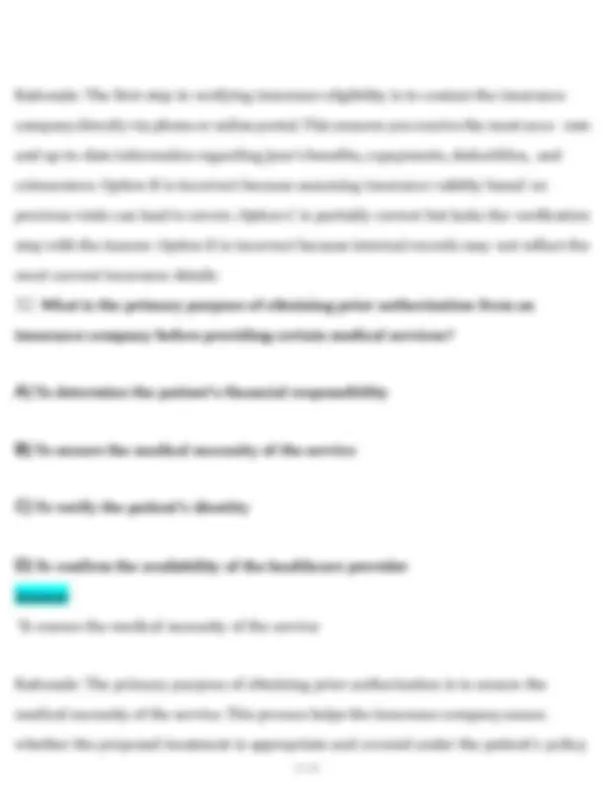
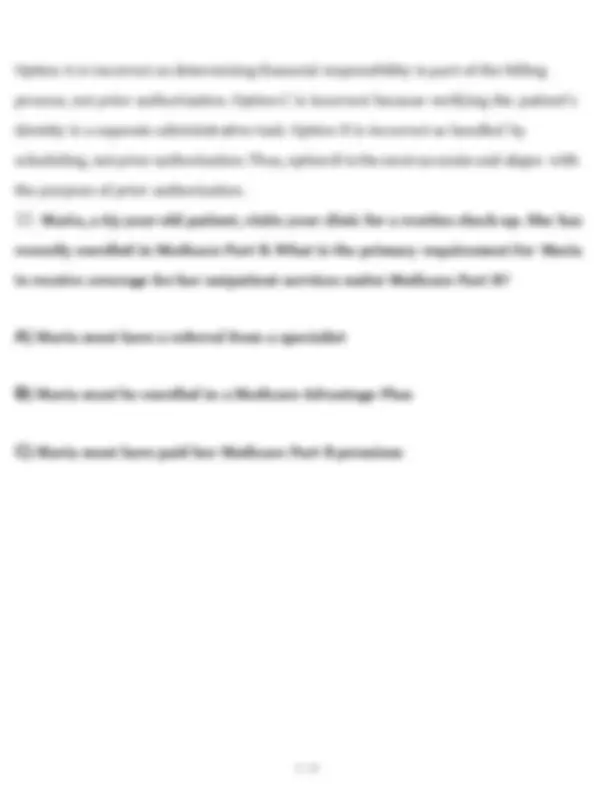
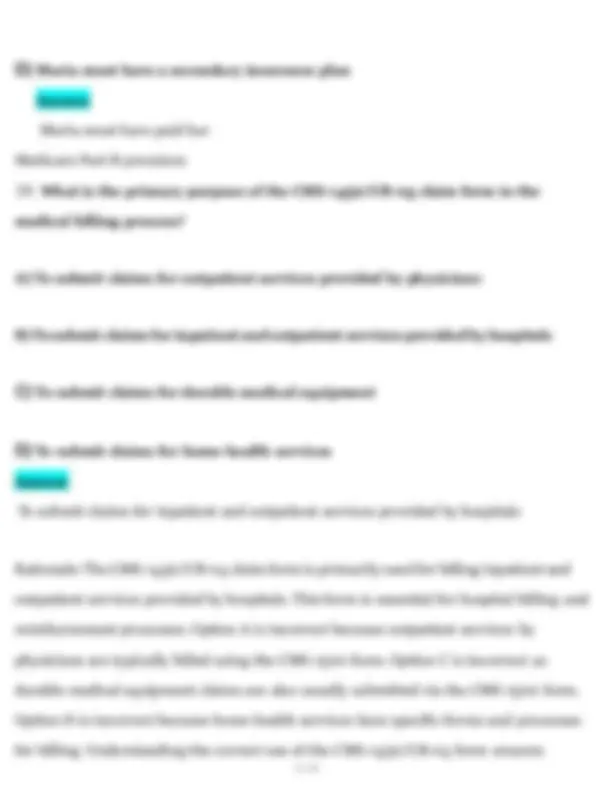
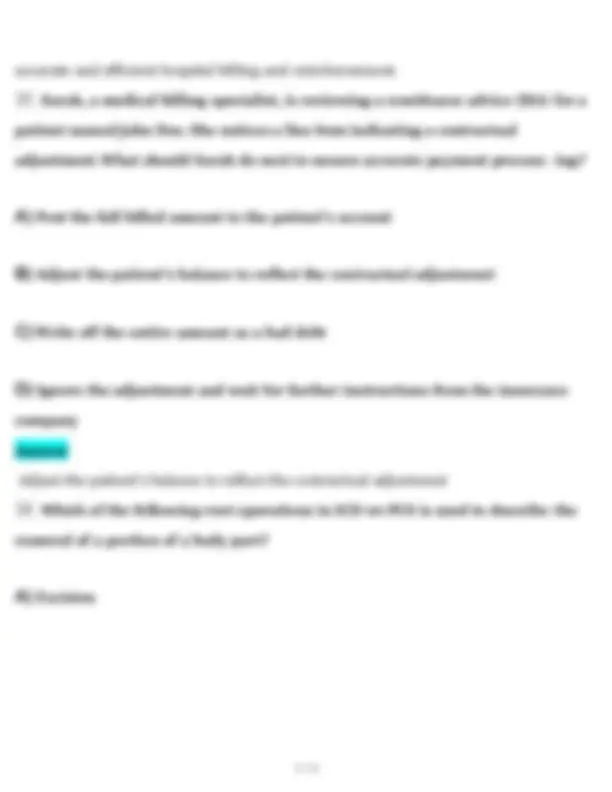
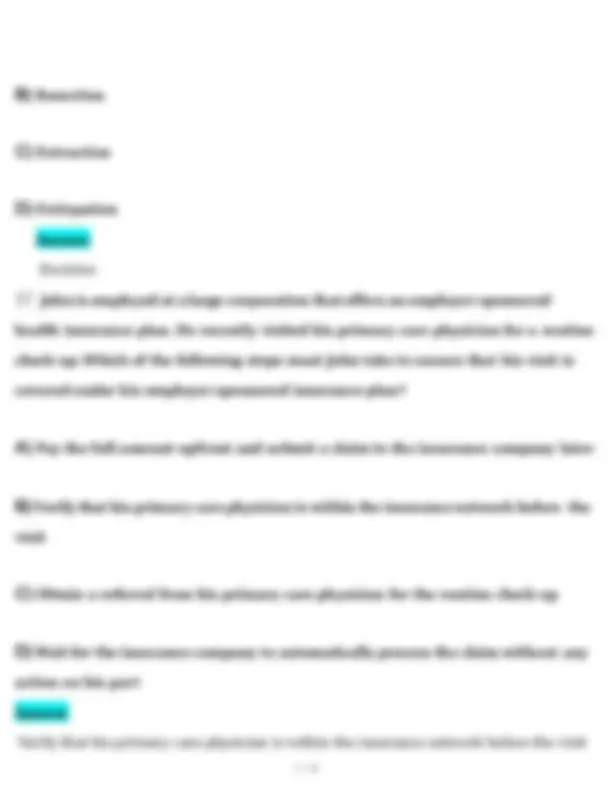
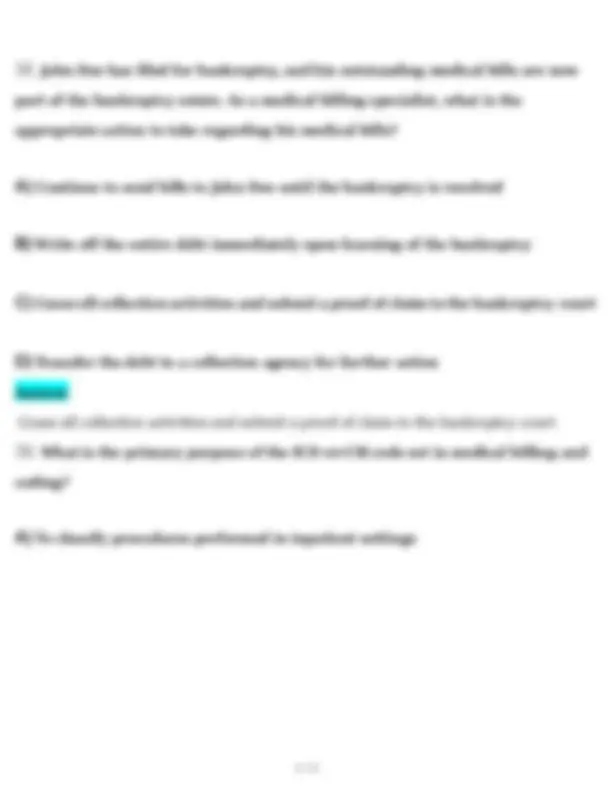
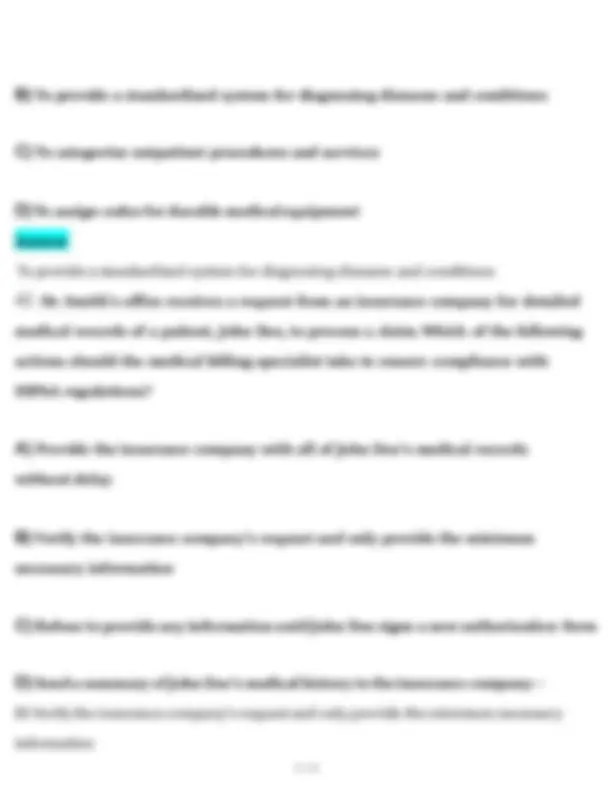
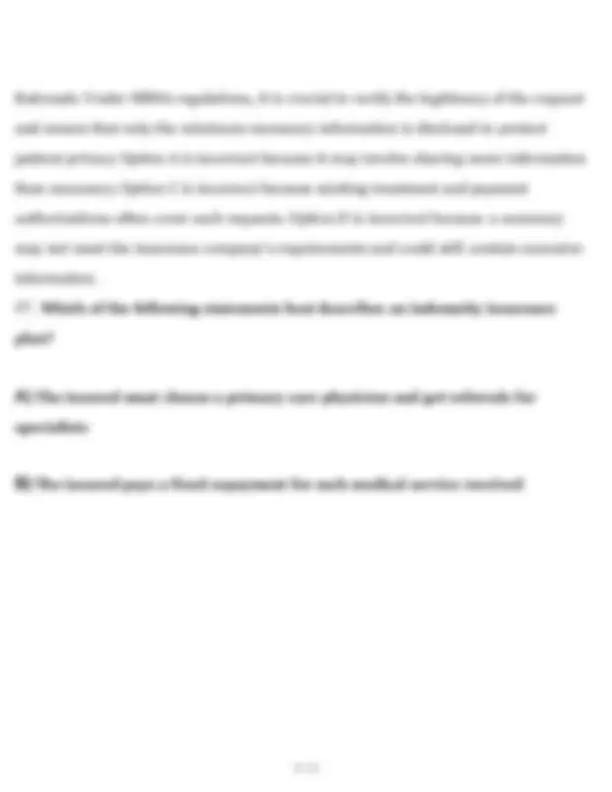
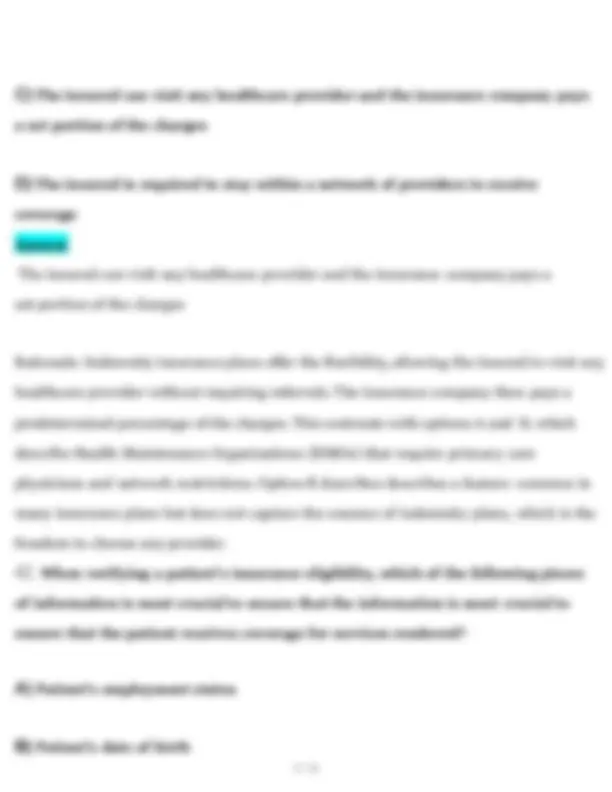
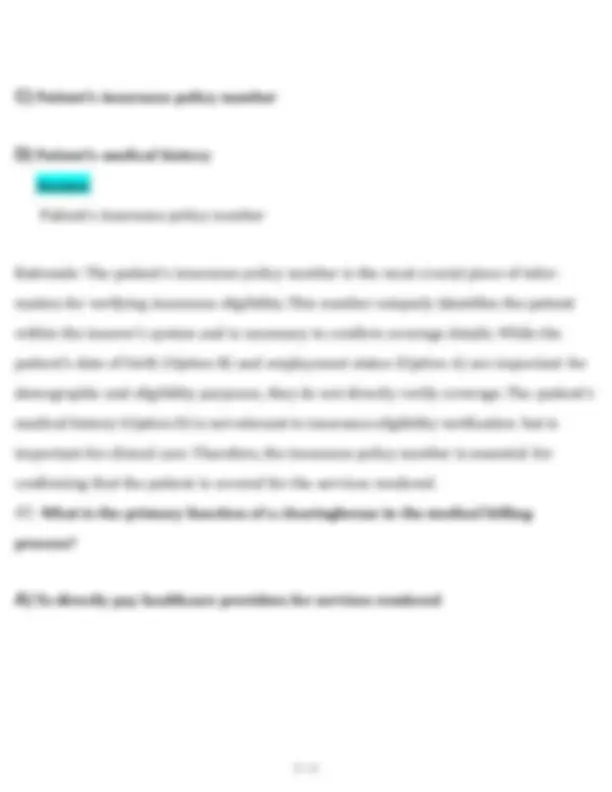
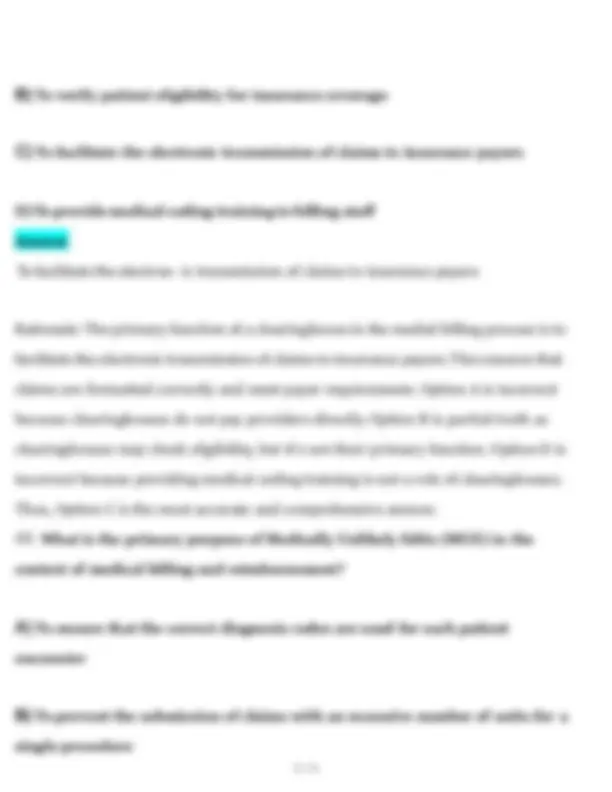
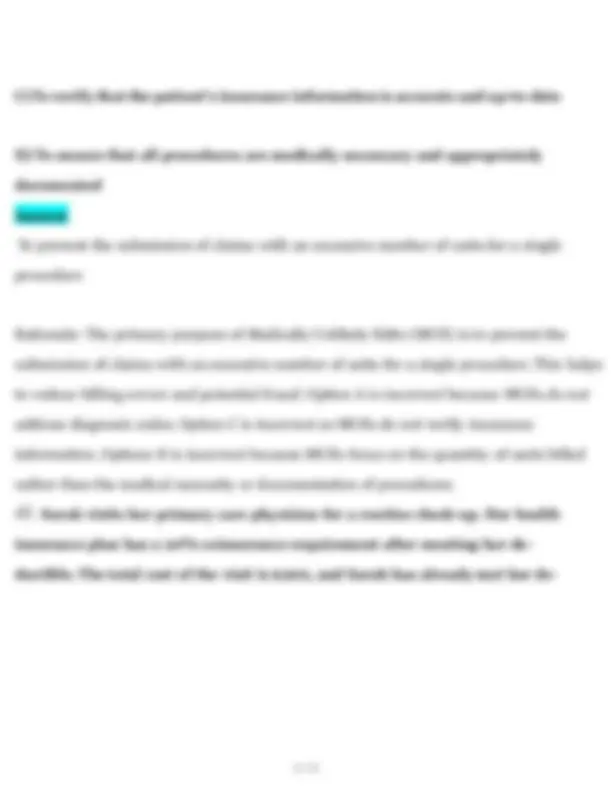
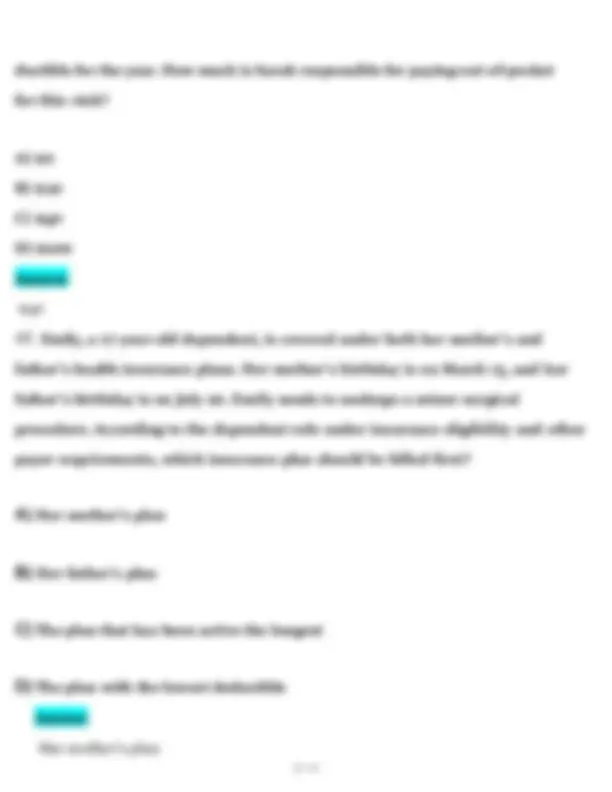
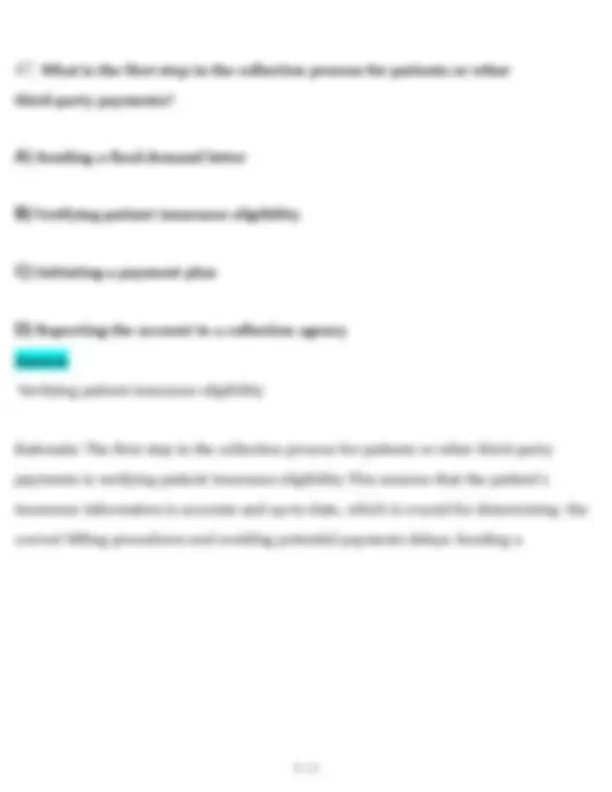
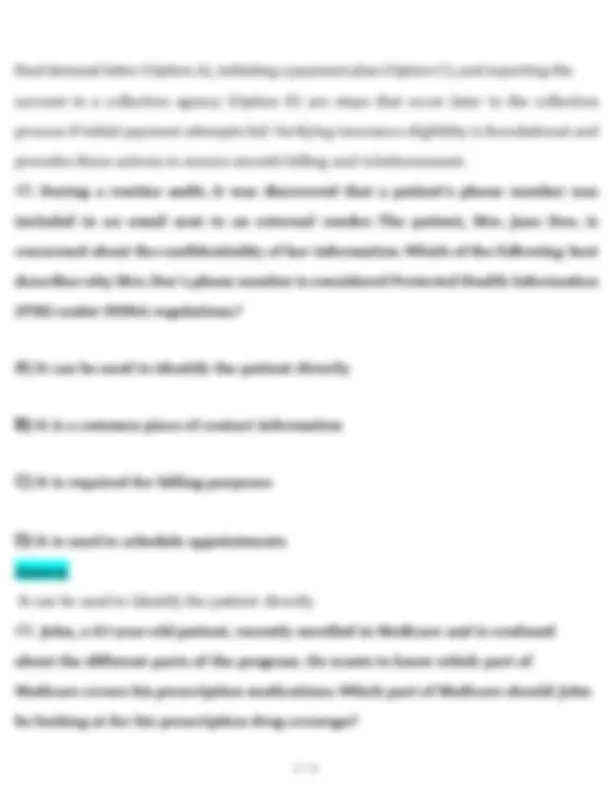
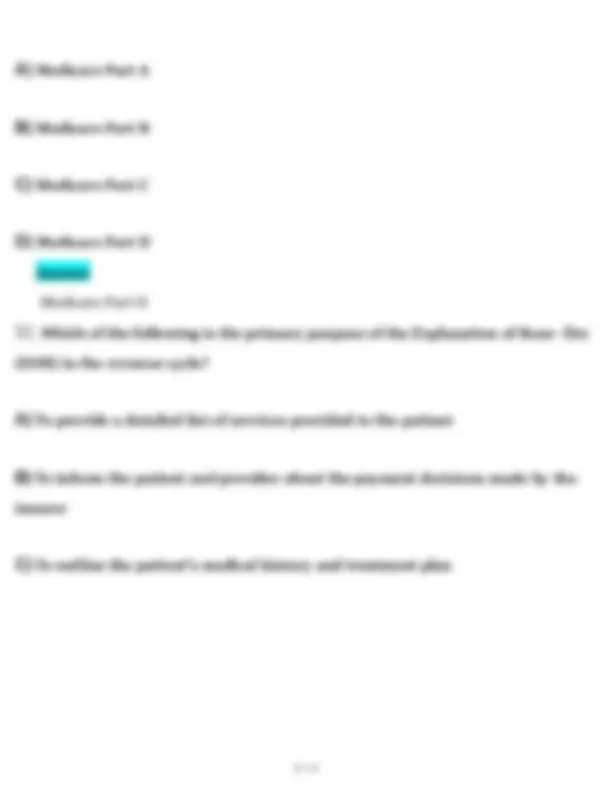
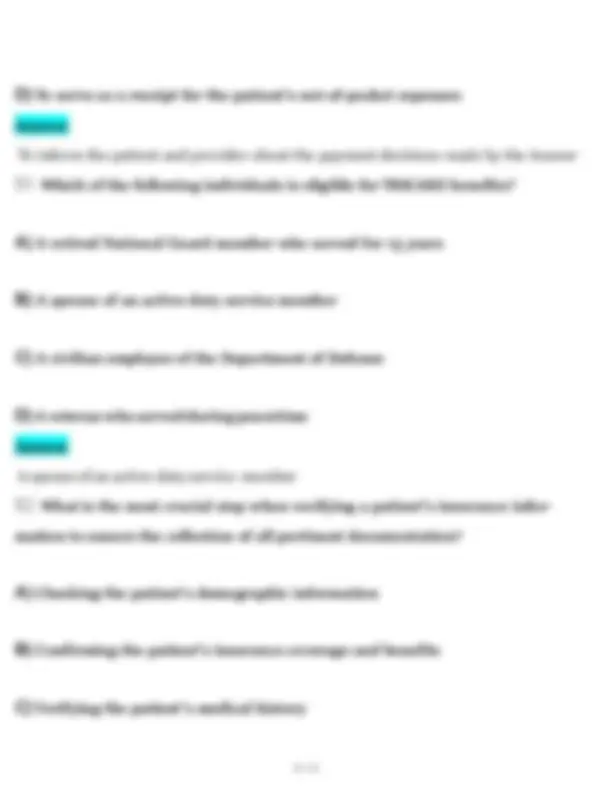
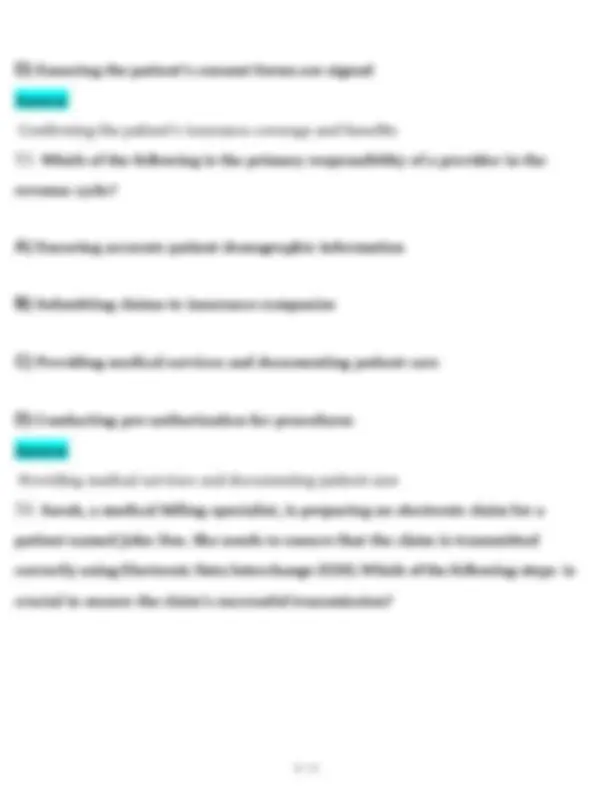
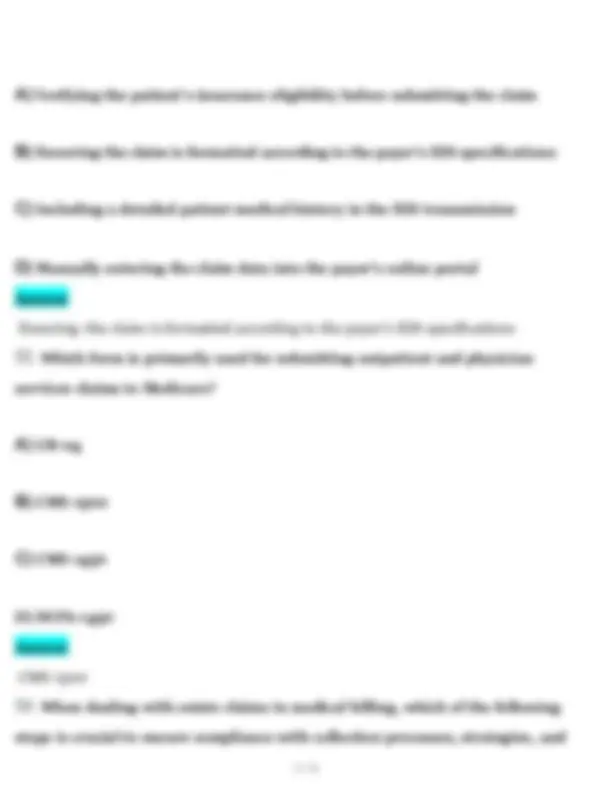
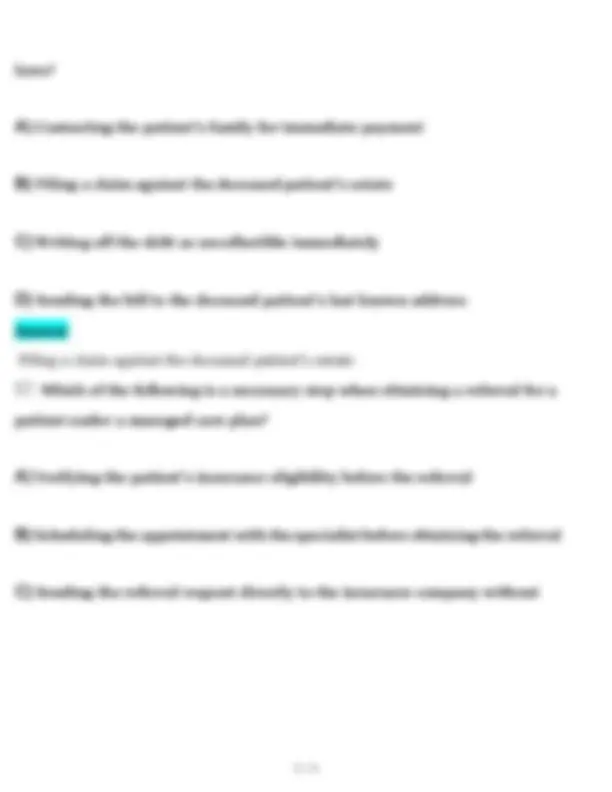
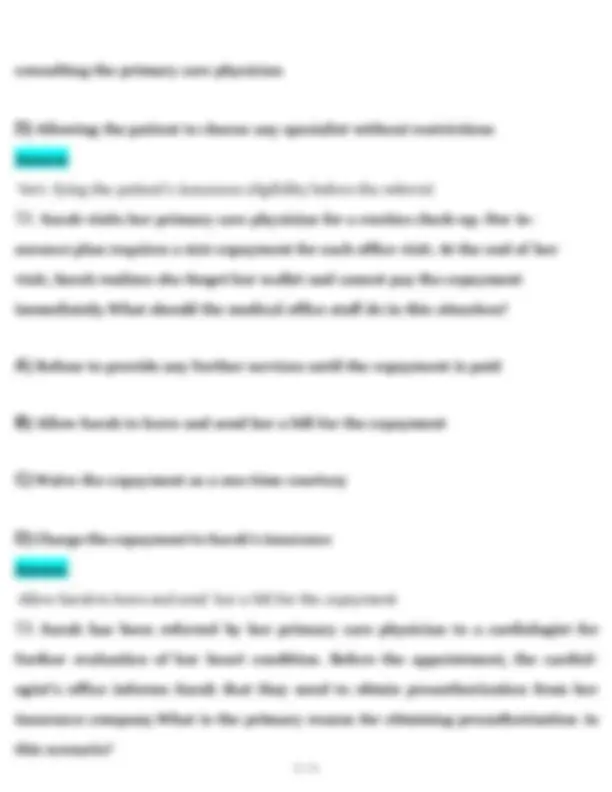
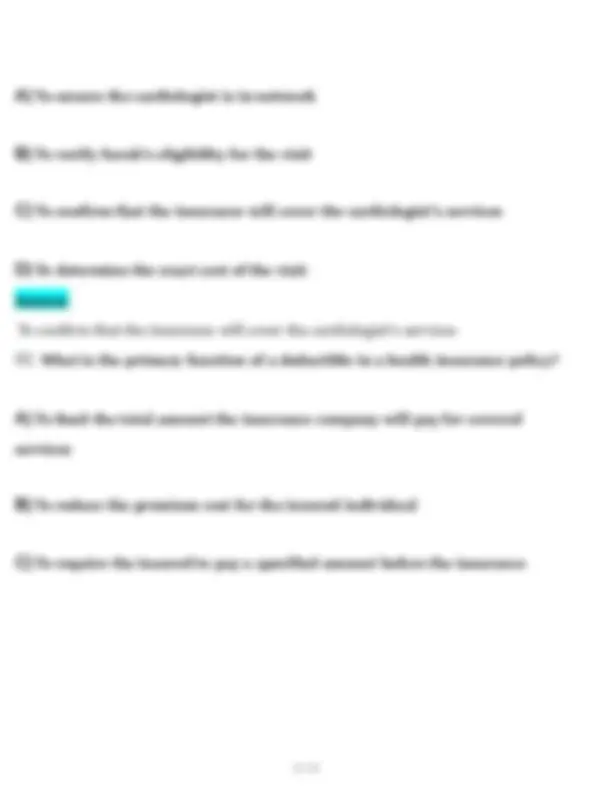
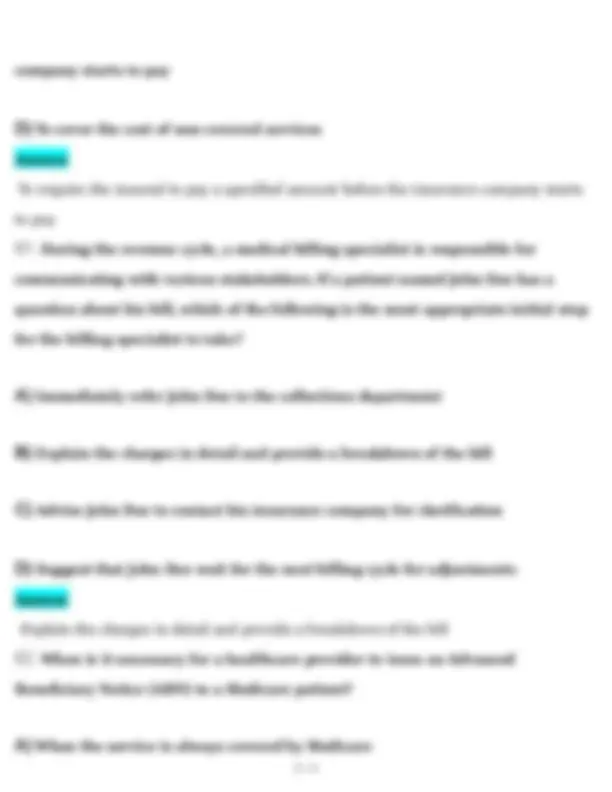
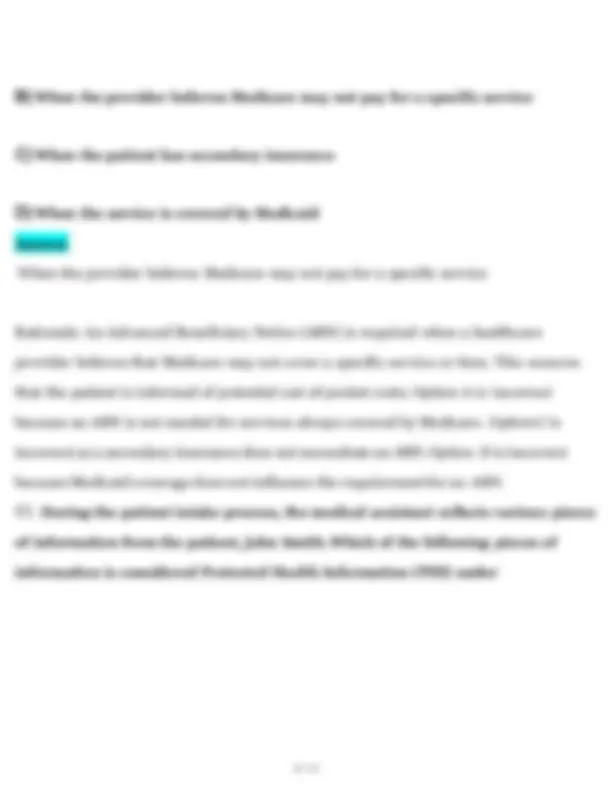
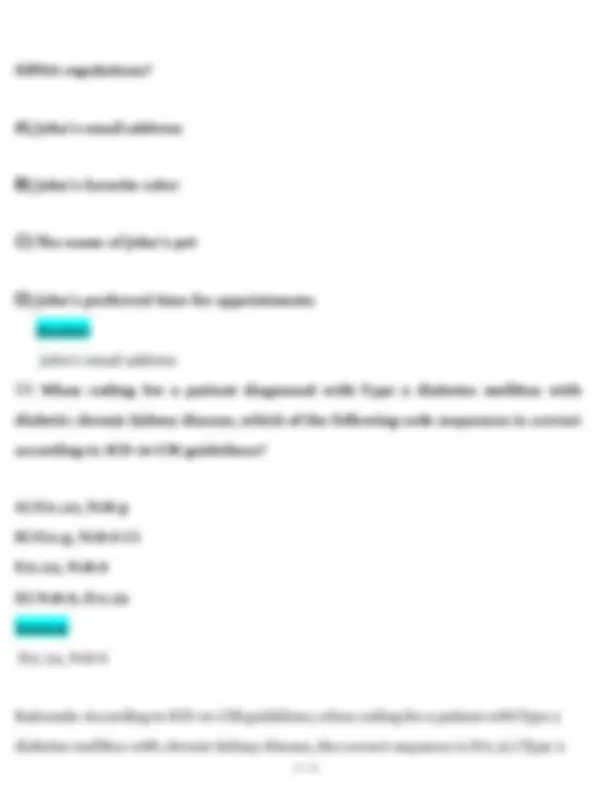
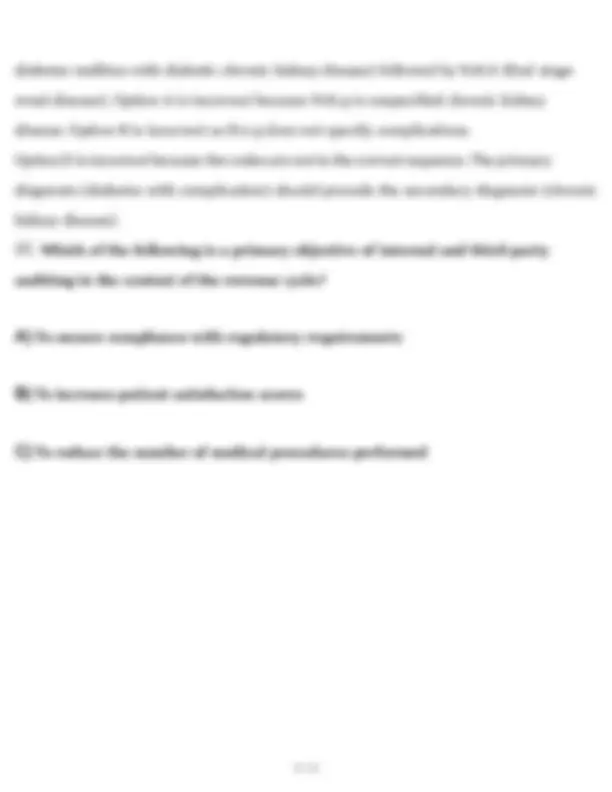
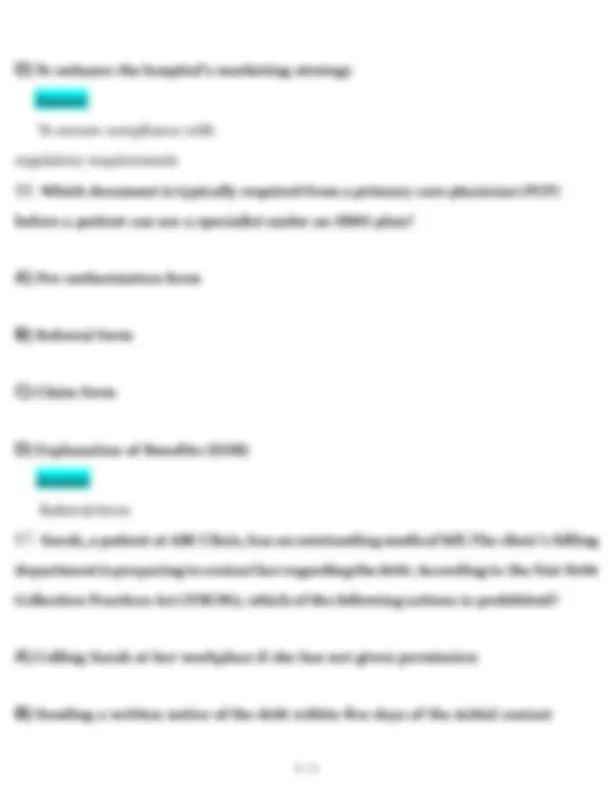
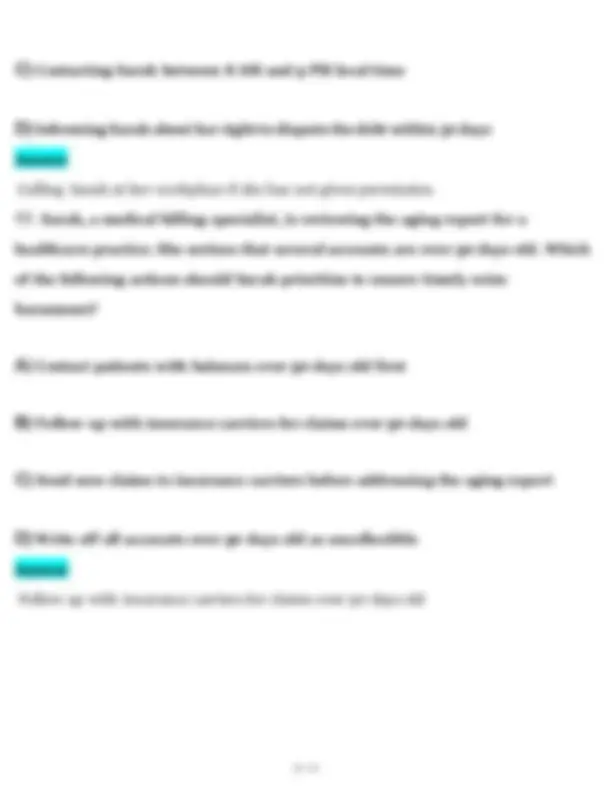
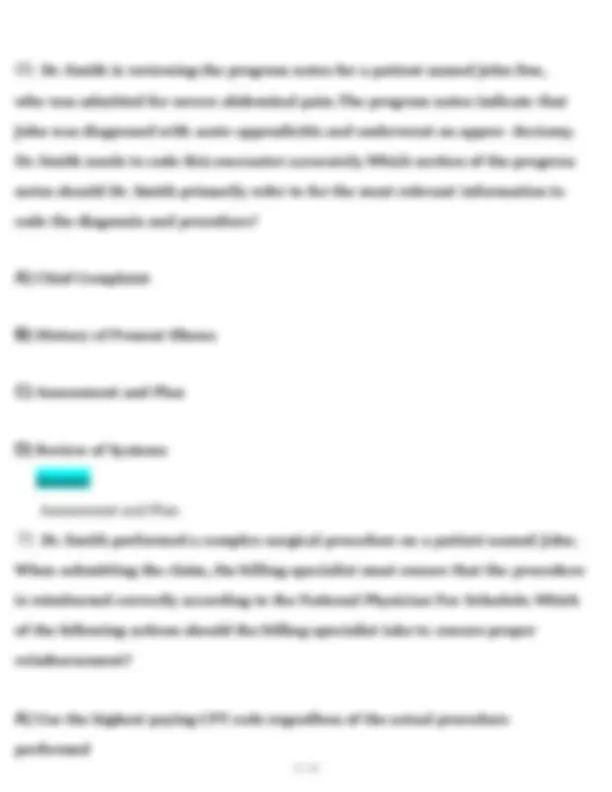
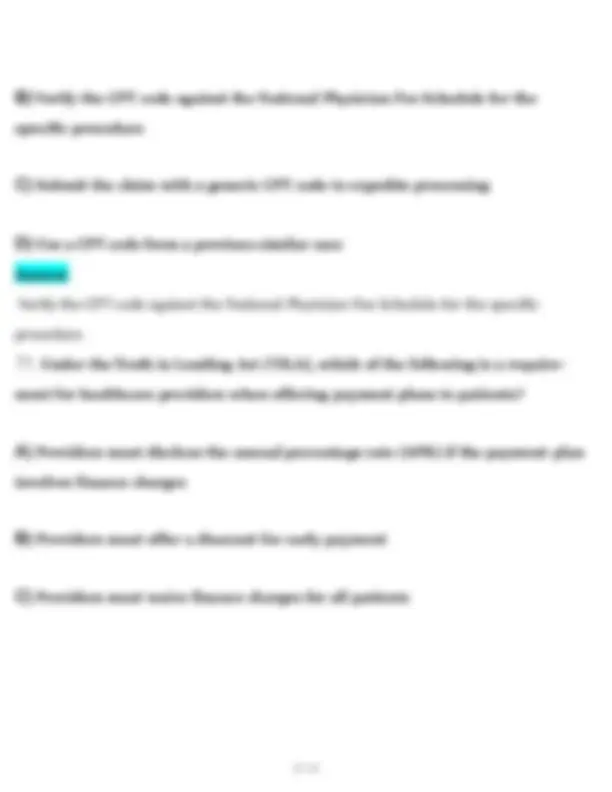
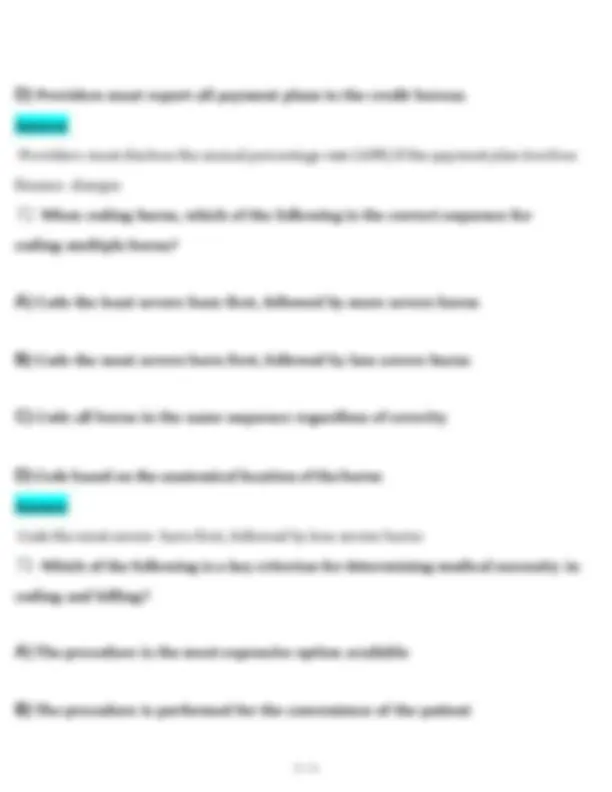
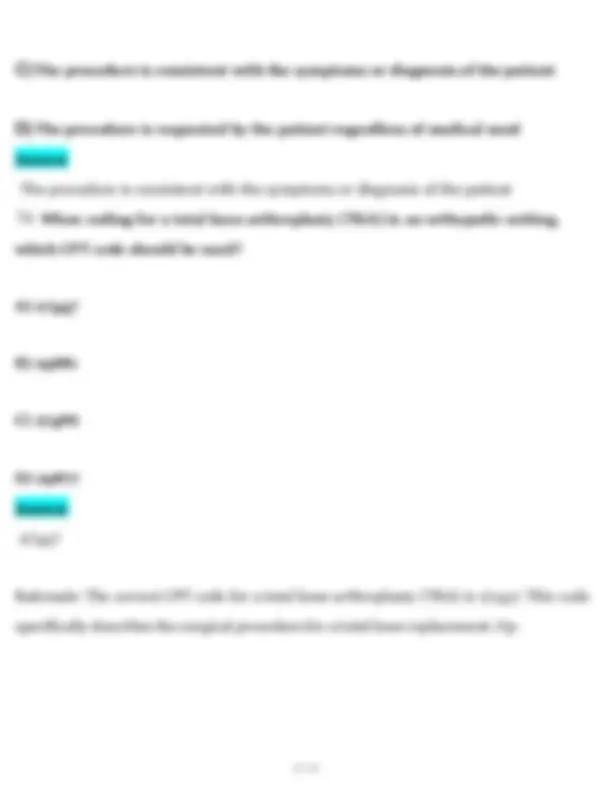
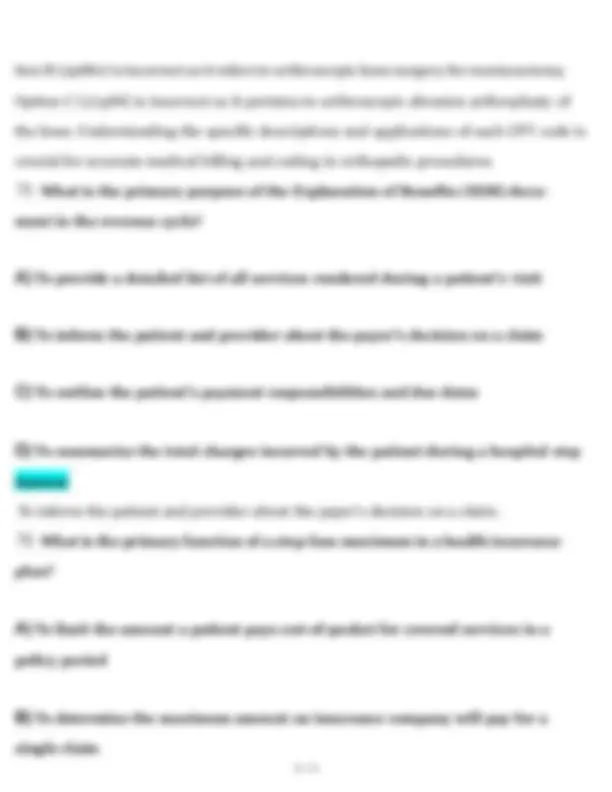
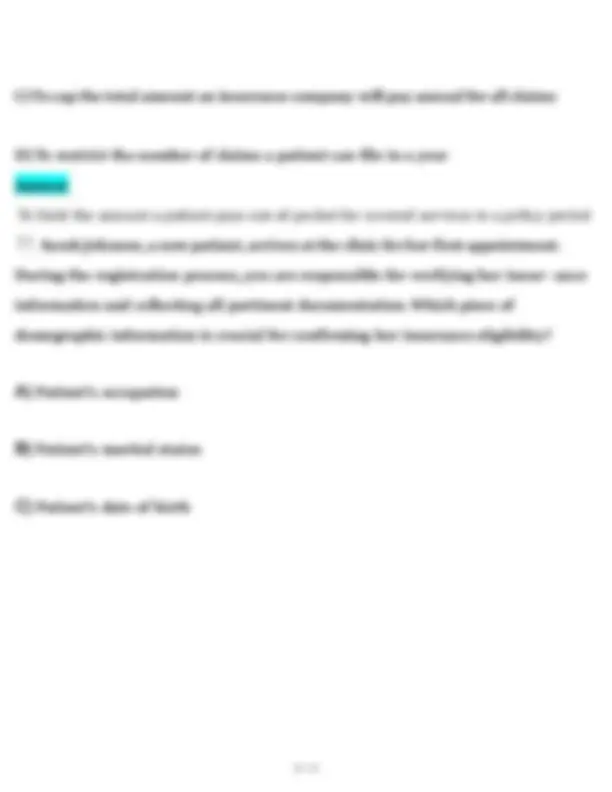
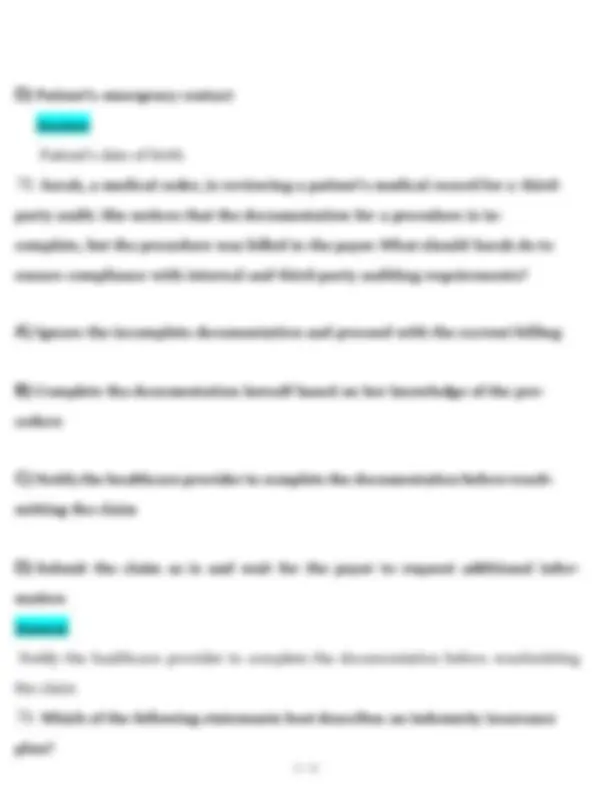
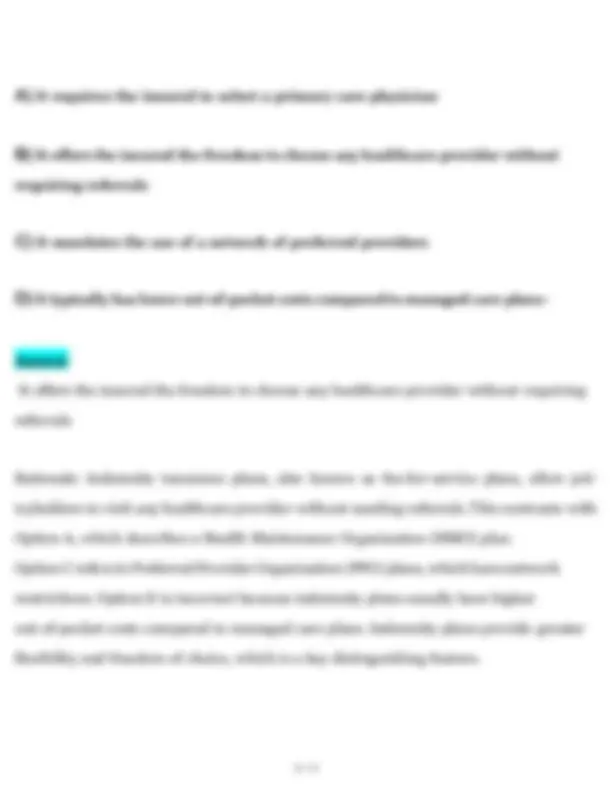
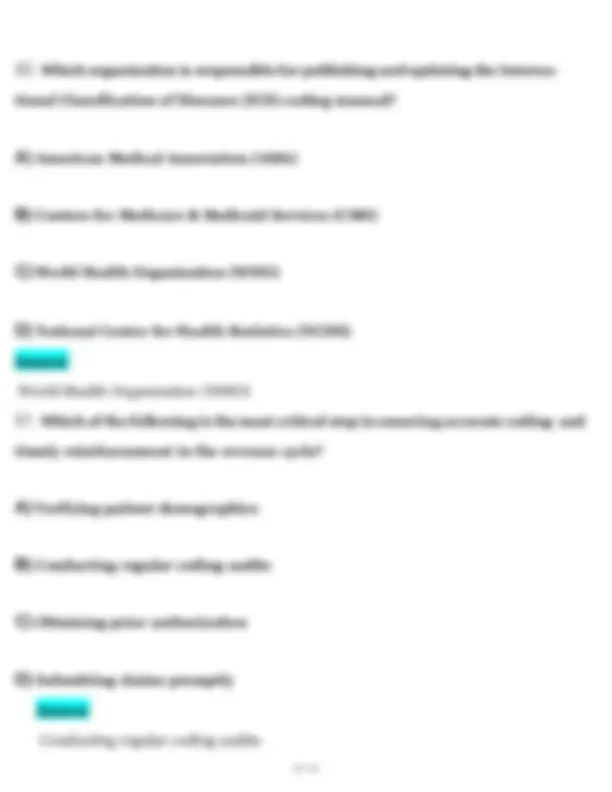
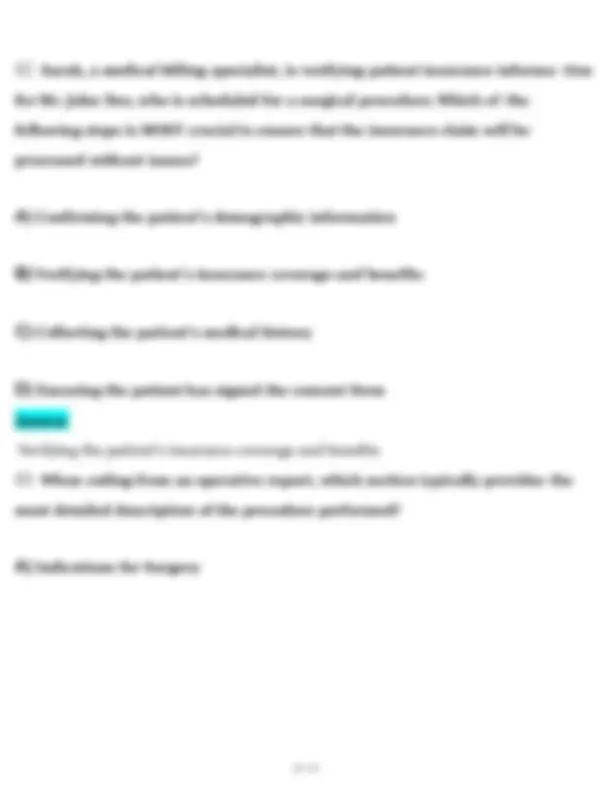
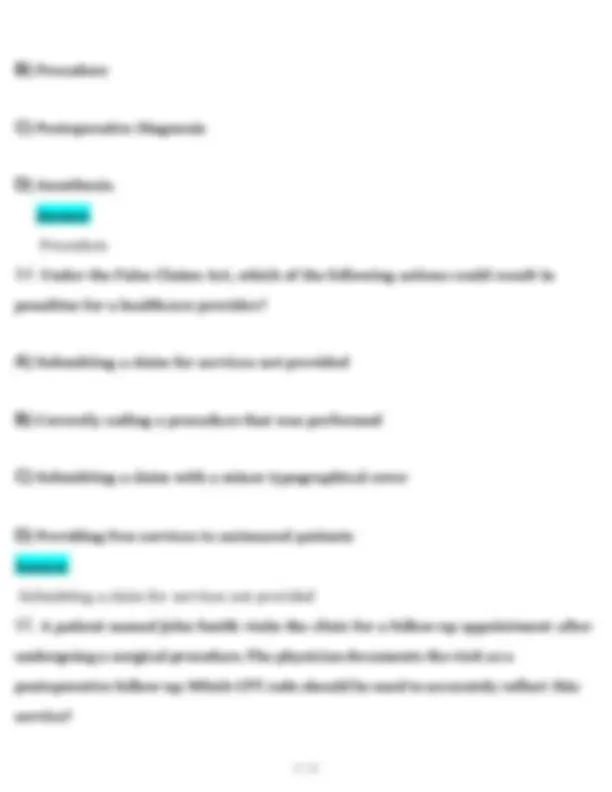
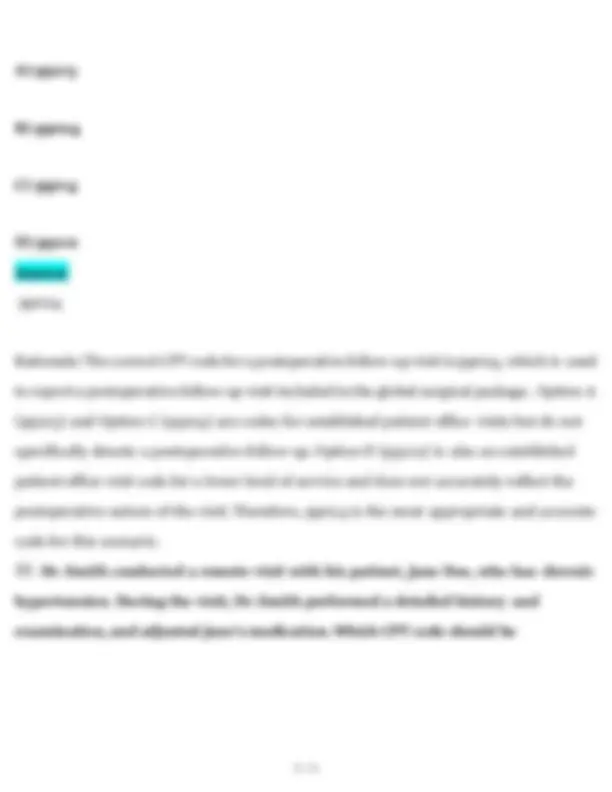
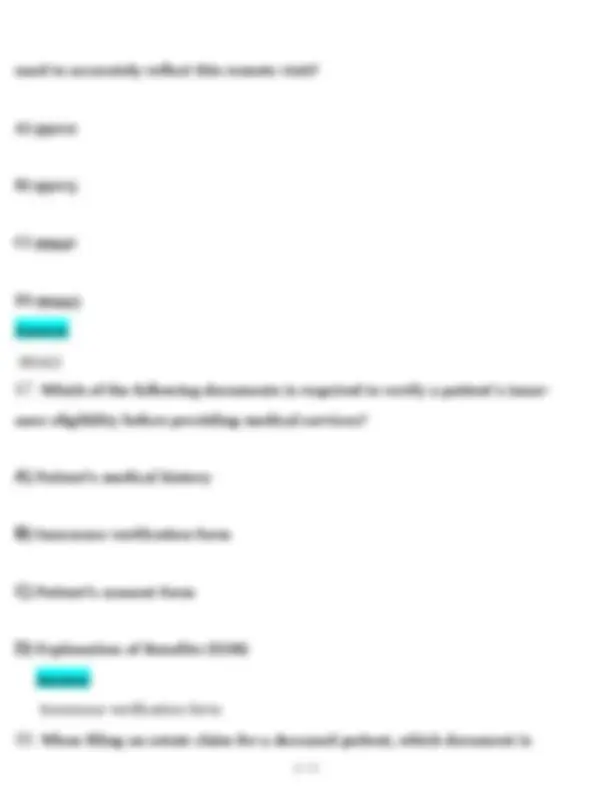
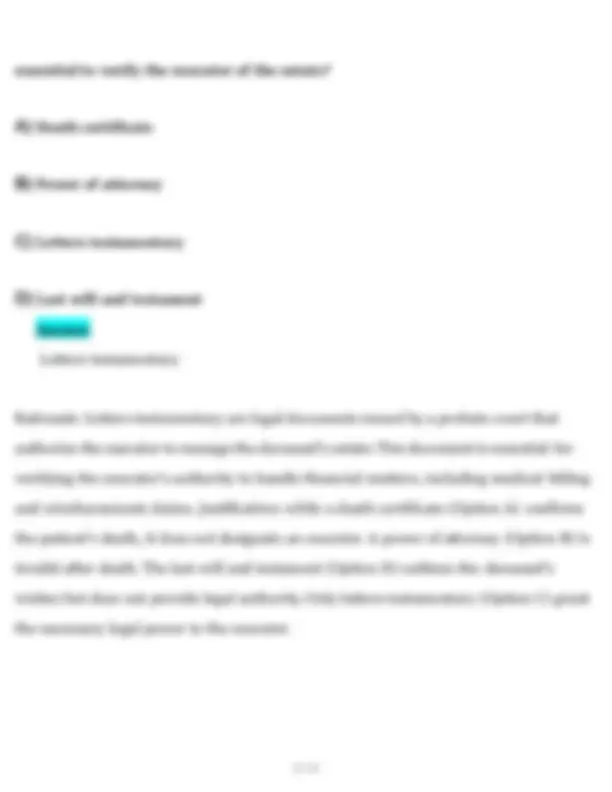
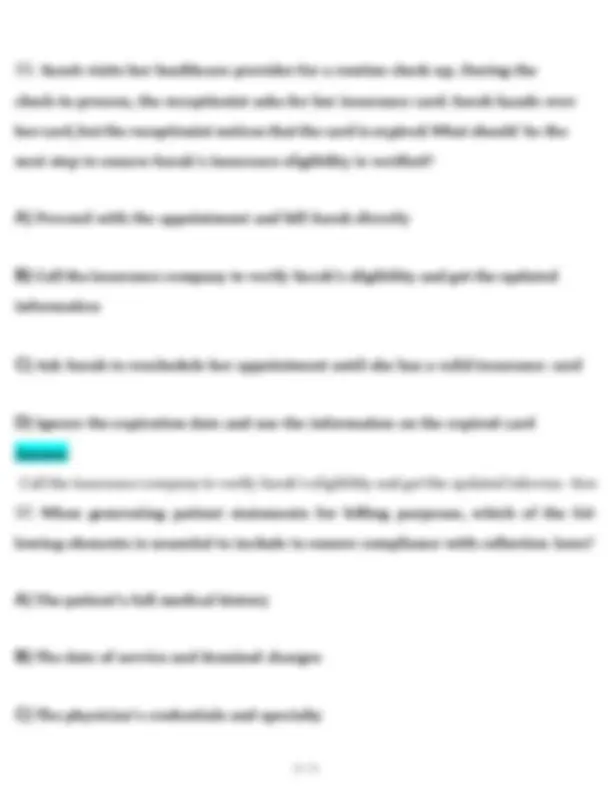
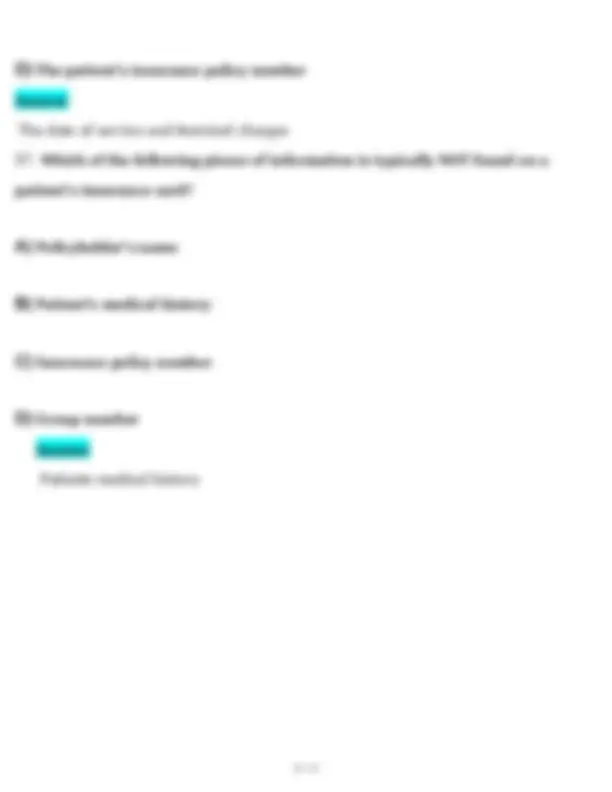
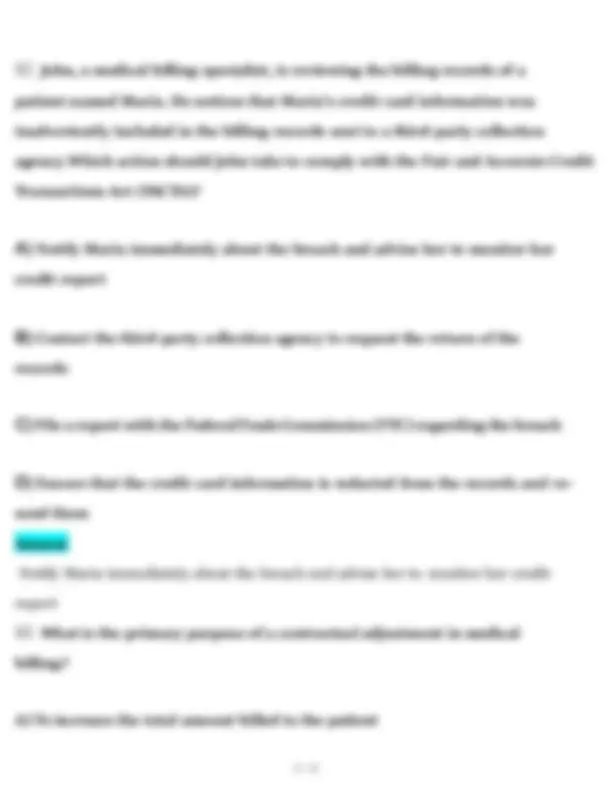
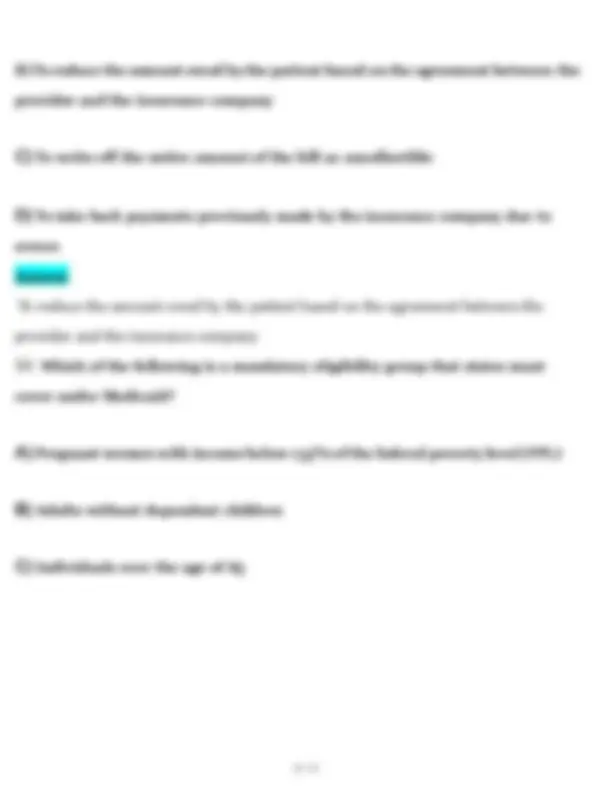
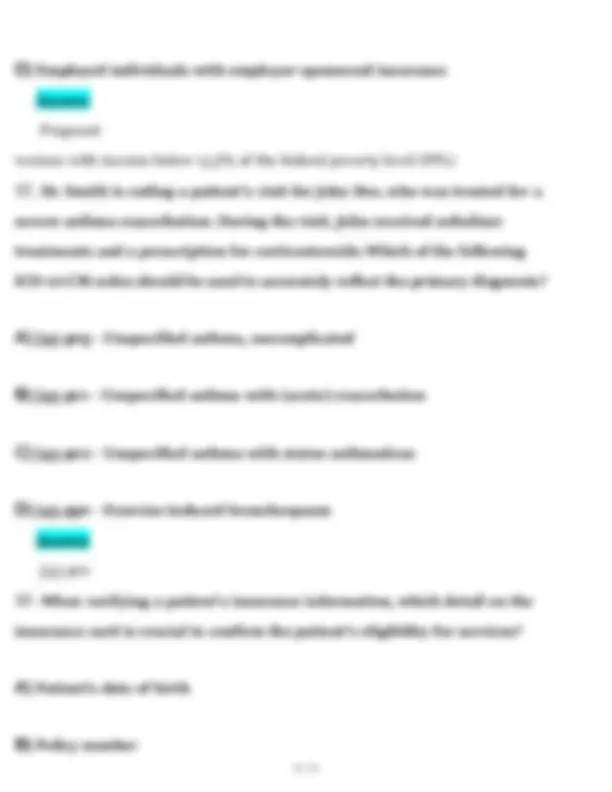
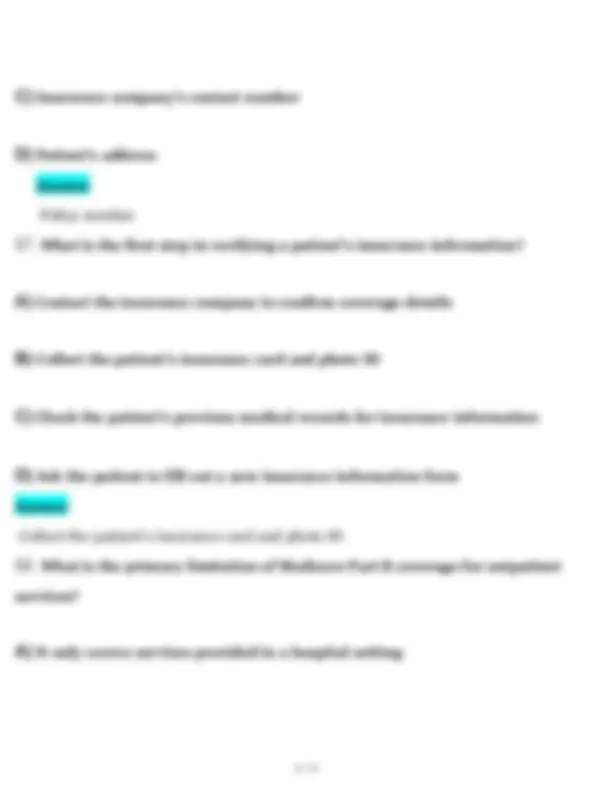
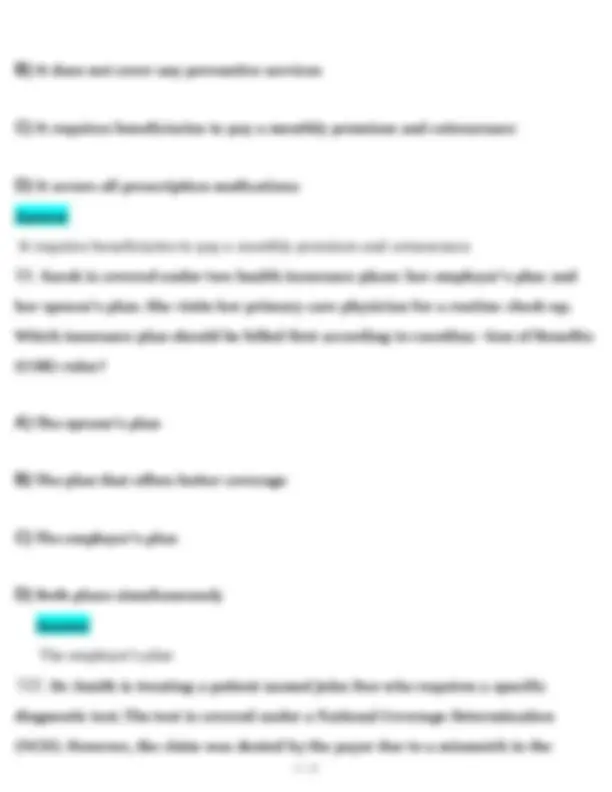
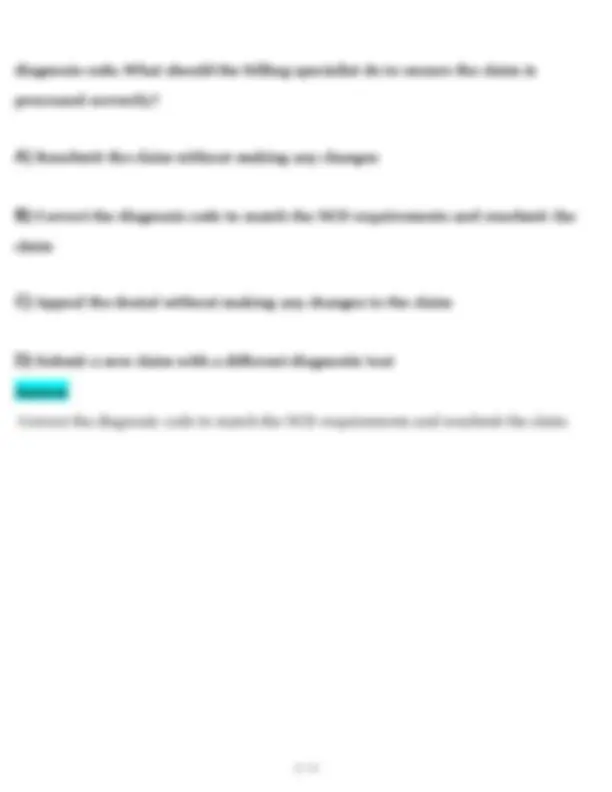


Study with the several resources on Docsity

Earn points by helping other students or get them with a premium plan


Prepare for your exams
Study with the several resources on Docsity

Earn points to download
Earn points by helping other students or get them with a premium plan
Community
Ask the community for help and clear up your study doubts
Discover the best universities in your country according to Docsity users
Free resources
Download our free guides on studying techniques, anxiety management strategies, and thesis advice from Docsity tutors
Comprehensive study guide for the NHA Certified Billing and Coding Specialist (CBCS) exam. Covers medical billing, coding systems (CPT, ICD-10, HCPCS), claims processing, HIPAA regulations, and insurance terminology. Ideal for students preparing for NHA certification. nhacbcs guide, medical billing exam, coding specialist study, cpt icd10 hcpcs, nha exam prep, billing coding certification, healthcare claims quiz, cbcs test questions, hipaa study guide, nha certification workbook
Typology: Exams
1 / 73

This page cannot be seen from the preview
Don't miss anything!


































































A) 99212
B) 99213
C) 99214
D) 99215 Answer
Rationale: CPT code 99214 is used for an office or other outpatient visit for the evalu- ation and management of an established patient, which requires a medically appro- priate history and/or examination and moderate level of medical decision-making. Option A (99212) is for a problem-focused visit with straightforward decision-making, which is too low for this scenario. Option B (99213) involves low complexity, which does not match the moderate complexity described. Option D (99215) is for high complexity decision-making, which is more extensive than required. Therefore, 99214 is the most accurate code for Dr. Smith's comprehensive evaluation and moderate complexity decision-making during Jane Doe's virtual visit.
A) To establish a national health insurance program
B) To promote the adoption and meaningful use of health information technol- ogy
C) To regulate the prices of medical services
D) To mandate the use of paper records in healthcare facilities Answer To promote the adoption and meaningful use of health information
Answer Box 21, Line A
Rationale: The primary diagnosis code should be placed in Box 21, Line A of the CMS- 1500 claim form. This box is specifically designated for listing diagnosis codes, with Line A reserved for the primary diagnosis. Box 24E is used for indicating the diagnosis pointer, which links the diagnosis to the procedure. Box 33 is for the billing provider's information, and Box 1A is for the insured's ID number. Proper placement of the primary diagnosis code ensures accurate billing and reimbursement, as it directly influences the processing of the claim. Misplacing this information can lead to claim denials or delays.
A) Claim Submission
B) Patient Registration
C) Insurance Verification
D) Coding of Services Answer Patient Registration
A) History
B) Examination
C) Medical Decision-Making
D) Time Answer Time
Rationale: The key components in determining the level of Evaluation and Manage- ment (E/M) services are History, Examination, and Medical Decision-Making. While time can be a factor in selecting the appropriate E/M level, especially in counseling and coordination of care, it is not considered one of the primary key components. Time is often used as a contributory factor when the majority of the visit is spent on counseling or coordination of care, but it does not replace the necessity of documenting the key components. Therefore, the correct answer is D) Time.
TRICARE Prime
A) Trachea
B) Bronchi
C) Alveoli
D) Larynx Answer Alveoli
A) Verifying patient insurance eligibility
B) Scheduling patient appointments
C) Conducting patient follow-up surveys
D) Maintaining patient medical records Answer Verifying patient insurance eligibility
A) Bill for the diagnostic test based on the physician's verbal confirmation
B) Ignore the diagnostic test since it is not documented in the medical record
C) Document the diagnostic test herself and proceed with billing
D) Contact the healthcare provider to obtain proper documentation before billing Answer Contact the healthcare provider to obtain proper documentation before billing
D) Bill only the therapeutic polypectomy as it includes the diagnostic colonoscopy Answer Bill only the therapeutic polypectomy as it includes the diagnostic colonoscopy
A) Refusing to extend credit to patients based on their employment status
B) Offering different payment plans based on the patient's credit history
C) Requiring a co-signer for patients under the age of 18
D) Charging interest on overdue payments Answer Refusing to extend credit to patients based on their employment status
A) -
B) -LT
Answer -LT
B) Query the provider for clarification
C) Leave the code blank and move on to the next
D) Use a general or unspecified code Answer Query the provider for clarification
A) The insurance through her spouse's plan
for reporting procedures, services, or supplies, and Field 33 is for the billing provider's information. Therefore, Field 1a is the correct and precise location for the patient's insurance policy number, ensuring proper processing and reimbursement.
A) Schedule an appointment directly with the specialist
B) Obtain a referral for her primary care physcian
C) Contact the specialist to verify if they accept HMO patients
D) Submit a pre-authorization request to the insurance company Answer Obtain a referral from her primary care physician
A) Centers for Medicare & Medicaid Services (CMS)
B) American Medical Association (AMA)
C) World Health Organization (WHO)
A) Sending a letter that clearly states the amount owed and the due date
B) Calling the patient repeatedly at their place of employment
C) Providing a contact number for patients to discuss their bills
D) Including a statement that the patient can dispute the debt within 30 days Answer Calling the patient repeatedly at their place of employment
A) Written consent
B) Implied consent
C) Informed consent
D) Express consent
Answer Informed consent
A) The procedure is requested by the patient
B) The procedure is covered by the patient's insurance plan
C) The procedure is consistent with the diagnosis and treatment of a condition
D) The procedure is the most expensive option available Answer The procedure is consistent with the diagnosis and treatment of a condition
A) Submit the claim as it is to avoid delays
B) Correct the diagnosis code to match the treatment provided before submit- ting the claim
A) Pre-authorization
B) Claims Submission
C) Payment Posting
D) Patient Registration Answer Claims Submission
A) To a family member who requests information about the patient's condition
B) To a public health authority for preventing or controlling disease
C) To an employer for employment-related decisions
D) To a media outlet reporting on a public figure's health status Answer To a public health authority for preventing or controlling disease
A) Submit a new claim with the corrected information without referencing the original claim
B) Correct the patient information on the original claim and resubmit it
C) Attach a corrected claim form to the original claim and include a cover letter explaining the corrections
D) Contact the insurance company to request a claim review before making any changes Answer Attach a corrected claim form to the original claim and include a cover letter explaining the corrections
Rationale: The correct procedure for resubmitting a denied claim due to incorrect patient information is to attach a corrected claim form to the original claim and include